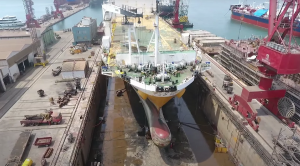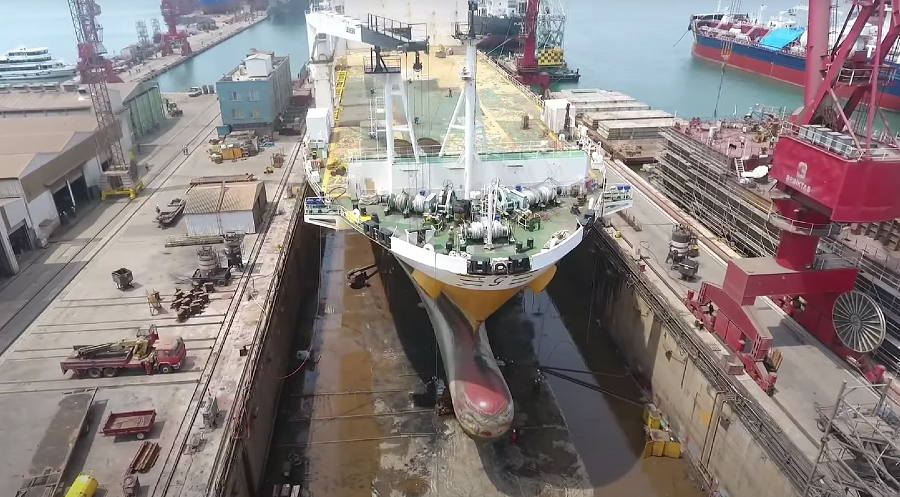Ship repair and dry docking are essential maintenance procedures that help keep a ship operational and safe. Ship repair refers to the process of fixing any damages to the ship’s hull, machinery, and other systems. Dry docking, on the other hand, refers to the process of taking the ship out of the water and placing it in a dry dock for maintenance and repair work. Ship repair and dry docking are necessary to ensure that the ship is in good working condition, as well as to comply with regulations set by classification societies and maritime authorities.

A ship drydock is a structure that is used to lift ships out of the water for maintenance, repair, and inspection. Drydocks are essential facilities for ship owners and operators as they provide a controlled environment for carrying out maintenance and repair work that cannot be performed while the ship is afloat.
There are two main types of ship drydocks: graving docks and floating docks. Graving docks are excavated into the ground and surrounded by walls, forming a basin that can be flooded with water. Once the ship is inside the dock, the water is drained out, leaving the ship resting on blocks or keel blocks. Floating docks, on the other hand, are large, buoyant structures that are partially submerged in water. The ship is floated onto the dock, which is then raised out of the water, allowing work to be carried out on the hull.
Drydocks are designed to accommodate ships of different sizes and types, and they are equipped with a range of facilities and services to support maintenance and repair work. These may include cranes, workshops, offices, storage facilities, and accommodation for workers. In addition, drydocks are often located near shipyards and industrial areas where skilled labor and specialized equipment are available.
The process of dry docking a ship involves several steps, including inspection, cleaning, and repairs. Before entering the drydock, the ship’s hull is cleaned and inspected to identify any damage or areas requiring repair. Once in the drydock, the ship is secured using a system of blocks and chains to ensure stability during maintenance work. Depending on the nature and extent of repairs required, the drydock stay may last anywhere from a few days to several weeks or even months. In addition to scheduled maintenance and repair work, drydocks may also be used for emergency repairs and inspections. For example, if a ship is involved in a collision or grounding, it may need to be drydocked to assess and repair any damage to the hull or other components.
The process of ship repair and dry docking typically involves the following steps:
- Assessment: The ship is assessed to determine the extent of the repairs needed, as well as the required duration of the repair work.
- Preparation: The ship is prepared for repair work, which may involve removing equipment or machinery from the ship, as well as cleaning and inspecting the hull.
- Dry docking: The ship is taken out of the water and placed in a dry dock. This process may involve the use of cranes and other equipment to lift the ship out of the water.
- Repair work: The necessary repair work is carried out, which may include repairing the hull, machinery, or other systems on the ship.
- Testing: Once the repair work is complete, the ship is tested to ensure that it is in good working condition and meets safety regulations.
- Re-launch: The ship is then lowered back into the water and prepared for sea trials to ensure that all repairs have been properly carried out.
Ship repair and dry docking require specialized skills and equipment, and are typically carried out by shipyards or specialized repair companies. The cost of ship repair and dry docking can be significant, but it is necessary to ensure that the ship remains safe and operational. Ship drydocks play a critical role in ensuring the safety, reliability, and longevity of ships, and they are an essential part of the global maritime industry.
Prepared by MaritimEducation team.

